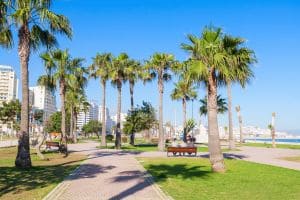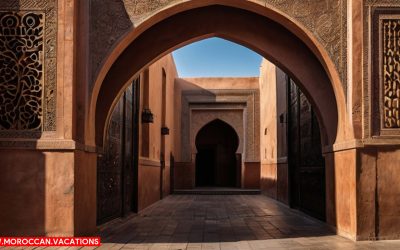You step into a world of intoxicating scents, where every breath transports you to a realm of botanical bliss. Welcome to the aromatic gardens of Marrakesh, where nature's fragrant treasures await your exploration. From the...
Unforgettable journeys through enchanting Morocco.
DiscoverAbout Morocco
Morocco is a country located in North Africa. It is known officially as the Kingdom of Morocco and has Rabat as its capital city. Morocco is bordered by the Atlantic Ocean and the Mediterranean Sea to the west and north, respectively. It shares land borders with Algeria to the east and southeast.
Morocco has a rich history that dates back thousands of years. The country has been influenced by various civilizations, including the indigenous Berber people, Arab conquerors, and European colonial powers. This diverse heritage is reflected in Morocco’s culture, architecture, cuisine, and traditions.
Spring
Summer
Autumn
Winter
Top Activities To Do In Morocco
Camel Trekking in the Sahara Dessert
Embark on a memorable camel trekking adventure in the Sahara Desert.
Marrakesh – Explore the Red City
Marrakesh, also known as the Red City, is a vibrant and bustling destination that combines historical attractions with modern amenities.
Visit a Traditional Moroccan Hammam
Indulge in the relaxation and rejuvenation of a traditional Moroccan hammam. These traditional bathhouses offer a luxurious and therapeutic experience.
EXPLORE MOROCCO’S IMPERIAL CITIES
Fez
Embark on a captivating journey through the ancient city of Fez, Morocco's hidden gem.
Meknes
Marrakesh
Experience the enchantment of Marrakesh, an alluring city in Morocco where historical richness, captivating culture, and modern amenities seamlessly converge.
Rabat
Famous Events & Festival in Morocco
Al Jadida Horse Festival
Timitar Festival
Gnaoua World Music Festival
Latest Blogs
Marrakesh's Historical Gates: Portals to the City's Past
Bab Agnaou: The Gateway to Marrakesh's Royal Past Instagram Image by: @moroccoholiday_ Step into the captivating city of Marrakesh through its historical gates, like portals to a bygone era. These majestic entrances, such as Bab Agnaou and Bab Doukkala, beckon you...
Vegetarian and Vegan Options in Marrakesh Street Food
Traditional Moroccan Vegetarian Tagines Are you tired of feeling limited when it comes to finding vegetarian and vegan options in Marrakesh's bustling street food scene? Well, we've got some good news for you! Get ready to embark on a culinary adventure filled with...





